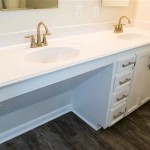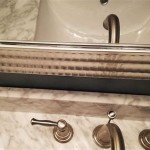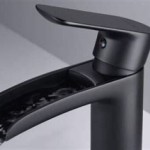Ada Requirements for Bathroom Sinks
The Americans with Disabilities Act (ADA) sets standards for accessibility in public and commercial facilities, including bathrooms. These standards ensure that individuals with disabilities can use these facilities safely and independently. One crucial aspect of ADA compliance is the design and installation of bathroom sinks. This article will delve into the specific ADA requirements for bathroom sinks, providing insights for architects, builders, and facility managers.
Sink Height Requirements
One of the most prominent ADA requirements for bathroom sinks is the height. The sink's top surface, excluding the faucet, must be between 29 and 34 inches from the finished floor. This range accommodates a variety of user heights and allows for a comfortable and functional experience. For sinks in public restrooms, the ADA requires that at least one sink be installed within this height range. However, it is highly recommended to make all sinks in a restroom ADA-compliant to ensure inclusivity for all users.
The specific height chosen for the sink should also consider other factors, such as the user's reach, the size of the sink bowl, and the position of the faucet. It's crucial to ensure that individuals with mobility limitations can comfortably reach the sink and operate the faucet without straining or requiring assistance. Additionally, the sink bowl should be deep enough to allow for adequate hand washing without splashing water outside the sink.
Faucet Reach and Operation
The faucet is another critical aspect of an ADA-compliant bathroom sink. The ADA requires that the faucet be positioned in a manner that allows for easy reach and operation. The faucet should be located within a maximum of 40 inches horizontally from the front edge of the sink and no more than 17 inches above the sink's finished floor. These dimensions ensure that individuals with limited reach can comfortably access and control the faucet.
The faucet itself must also meet specific requirements. It should be lever-style or have a similar mechanism that can be easily operated with one hand. The faucet should also be equipped with a temperature-limiting device, such as a thermostatic valve, to prevent scalding. This feature is essential to protect individuals with limited sensory abilities who might not be able to detect extreme temperature changes.
Sink Design and Accessibility Features
Beyond basic height and faucet requirements, the ADA provides guidelines for sink design and accessibility features. These guidelines aim to create a user-friendly experience for individuals with disabilities. Here are some key considerations:
Clearance Underneath the Sink: There should be at least 29 inches of clear floor space underneath the sink, allowing for easy access and maneuverability for wheelchair users.
Knee and Toe Clearance: The design of the sink should provide adequate knee and toe clearance, ensuring that individuals with mobility impairments can comfortably approach the sink and use it without obstruction.
Accessible Mirrors: Mirrors should be positioned to provide users with a clear view of their reflection, regardless of their height or wheelchair position. This often entails mounting the mirror lower than a conventional placement.
Accessible Dispensers: Soap and hand sanitizer dispensers should be placed within easy reach and be operable with one hand. Consider using automatic dispensers that activate without direct physical contact, promoting hygiene and accessibility for individuals with limited hand function.
Grab Bars: Grab bars are crucial for stability and support, especially for individuals with balance issues. ADA requirements recommend installing grab bars near the sink, positioned at a height that allows for secure gripping. Make sure the grab bars are appropriately spaced and securely mounted for optimal safety and support.
Contrasting Colors: To enhance visibility and ease of use, the sink bowl, faucet, and surrounding surfaces should be equipped with contrasting colors. This helps users with visual impairments identify essential features.
By meticulously adhering to these ADA guidelines, you can create bathroom sinks that are accessible and inclusive for all individuals. These requirements promote independent living, empower users with disabilities, and create a more equitable and welcoming environment for everyone.

Ada Compliant Bathroom Sinks And Restroom Accessories Laforce Llc

Ada Compliant School Stainless Steel Sinks

Ada Compliant Bathroom Sinks And Restroom Accessories Laforce Llc

Designing Your Ada Compliant Restroom Crossfields Interiors Architecture Accessible Bathroom Sink Design
Ada Restroom

Ada Bathroom Layout Commercial Restroom Requirements And Plans

Ada Compliance Bathroom And Vanity Federal Brace

How To Put A Disposal In An Ada Sink Abadi Access

Buy Ada Bathroom Sinks Allorausa Allora Usa

Pin On Ada
Related Posts







